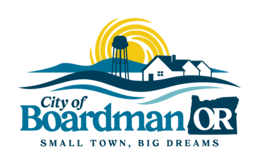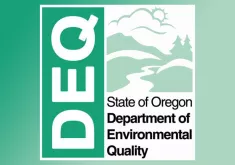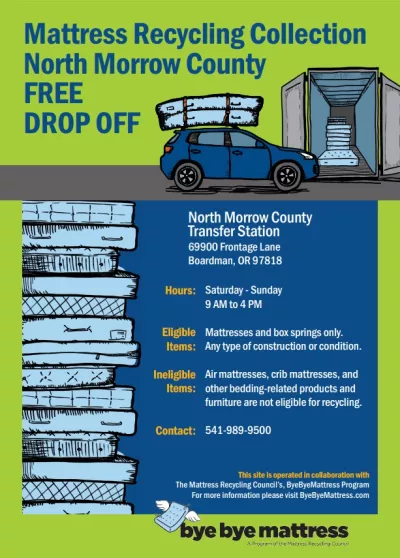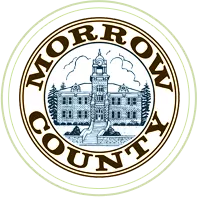
Boardman's Recycling Program
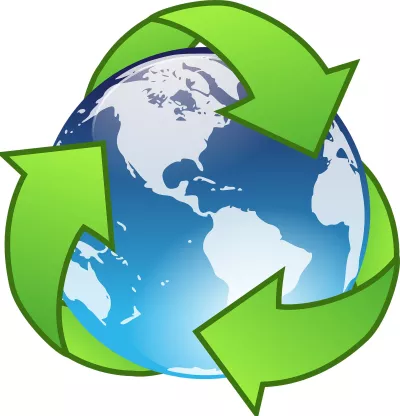
City of Boardman's free recycle center is located next to City Hall.
All solid waste (garbage, recycling, etc.) in Boardman is contracted by the local private company, Sanitary Disposal, Inc. (SDI). SDI collects and manages all curbside garbage collection, manages the free recycling center, and operates a waste transfer station.
North Transfer Station 69900 Frontage Lane, Boardman
South Transfer Station 57185 Highway 74, Lexington
Saturday and Sunday from 9:00 am to 4:00 pm
Free Mattress Recycling for Morrow County Residents
Morrow County residents can drop off unwanted mattresses or box springs at no cost. Items can be any type of construction or condition.
Two locations in Morrow County:
- North Morrow County Transfer Station, 69900 Frontage Lane, Boardman. Saturdays and Sundays, 9 a.m. to 4 p.m. Call 541-989-9500 for details.
- South Morrow County Transfer Station, 57185 Hwy 74, Lexington. Saturdays and Sundays, 9 a.m. to 4 p.m. Call 541-989-9500 for details.
Morrow County Solid Waste Management
Our transfer stations offer FREE of charge disposal for recycling of newspaper, cardboard, small steel cans, small glass and aluminum, latex and/or oil based paint (no more than 5-gallon containers), electronics including computer towers, computer screens, key boards, printers, handheld radios, fax machines, tablets, telephones, cell phones, stereo and copiers.
Morrow County will waive the fee for the disposal of large items such as furniture, home appliances, washers, dryers, refrigerators, water heaters and mattresses.
Saturday and Sunday from 9:00 am to 4:00 pm
North Transfer Station 69900 Frontage Lane, Boardman
South Transfer Station 57185 Highway 74, Lexington
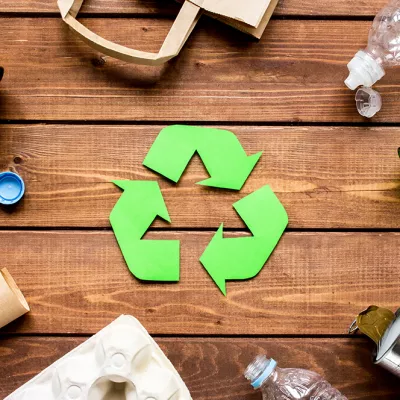
Reasons to Recycle and Prevent Waste:
1. You love our community and state: Let’s help keep it clean. Recycling and reducing waste conserve precious natural resources such as timber, water and minerals used for new products and reduces greenhouse gas emissions that contribute to global climate change.
2. You love clean air: Recycling and preventing waste prevents pollution by reducing the need to collect new raw materials and reducing the amount of waste that is burned or incinerated.
3. You love conserving energy: Products being recycled, reused, repurposed or repaired usually require much less processing to remain usable than extracting and processing raw materials.
4. You love saving money: Reducing and reusing allows products and materials to be used to the fullest – and can save you, your family, your business and your community money. Just one way this helps save businesses money is through decreased amounts of trash.
5. You love our community and environmental justice: Recycling and reuse activities create jobs, wages and tax revenue, and help combat the challenge of waste management facilities being concentrated in poor rural areas, communities of color or Native American reservations, which are then subjected to higher environmental and health hazards and lower property, recreation and aesthetic values. Reducing waste, repurposing materials and recycling bottles, cans and other materials also helps keep Oregon beautiful and litter-free!

How can you get started on your waste prevention journey?
Shop Local: Buy local whenever possible. You’ll use less fuel which helps reduce your carbon footprint and you help support local businesses in your community.
Think Green: When out shopping or even before you shop, ask yourself: Do I really need it? Will I use this? Do I already own this or can I borrow this? Think carefully when choosing what and how much to buy.
Shop wisely: Buy the best-made, most durable product you can afford, that is built to last longest without needing replacement.
Focus on Reuse:
- Can an old piece of good quality furniture with character be refurbished or upcycled for a new use? Chances are it will save you money, save trees, and reduce what is going into the landfill. Can it be donated?
- Simple ideas to put into practice are avoid single use products. Switch to reusable shopping bags, switch to cloth napkins, refillable water bottles and cups, reusable food storage containers, and reusable party supplies like cups, plates, utensils, and silverware.
- Say no to single-use paper or plastic items and choose ceramic, glass, cloth, metal, silicone, durable plastics, recycled plastics, or wood. BYO -- bring your own – bottle/cup, reusable straws and utensils for casual/fast food restaurants. Is there an organization in your community that loans out reusable items that you can borrow or check out?
Buy in Bulk: Cut waste, packaging and cost by buying products in bulk. You’ll also save gas. Look for products labeled as containing recycled packaging but beware, not all items marked as compostable, or recyclable can be recycled in your community. Check with your local service provider to see what can be recycled in your area.
Sanitary Disposal 541-567-8842
Morrow County Has Two Transfer Stations:
North-End Station, 69900 Frontage Lane, Boardman
South-End Station, Hwy 74 Heppner/Lexington Hwy, Lexington
Share: Consider borrowing, renting or even sharing items you don’t use often, such as tools, party decorations or furniture. Some community libraries have a lending library of tools, small appliances, games, etc.
Buy Second-Hand/Vintage/Salvage: Clothes, appliances, furniture, books, movies and even computers can be bought second-hand at a fraction of the retail price. Smart shoppers know what they can find at their local thrift, resale, vintage, salvage and even antique stores – including new, or like-new, items or “vintage” goods built to last longer. Some non-profit organizations and re-sale businesses accept new and gently used furniture, home accessories, building materials and appliances to help transition people and families that have lost their homes to a catastrophic event or for people transitioning back into housing. Building materials could be used to assist in community service and repair events for seniors and people with mobility issues.
Located in Boardman:
Boardman Food Pantry
Located in Umatilla:
EDS Thrift
J & R Gifts & more
Located in Hermiston:
Agape House
Goodwill
Kidz Corner
Neighborhood Books & Gifts
Repair: Maintaining and repairing items you already own such as clothes, tires and appliances extends their useful lives, saves you money and keeps stuff out of landfills. Repair items yourself if you can or make a trip to a local repair shop. Trade repair services with others in your community.
Repurpose: Kick your creativity up a notch and discover what you can repurpose.
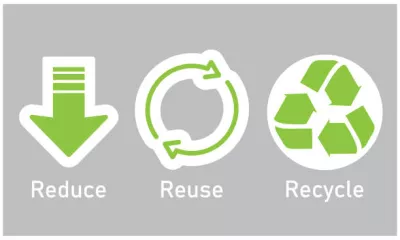
Waste prevention is as simple as buying and using less stuff. Ask yourself, do you really need it? How often will I use this? Can I rent or borrow it if I’m not going to use it very often?
Waste prevention reduces environmental impacts across the entire life cycle of materials. By reducing waste – not making that waste in the first place – we can reduce the amount and cost of extracting resources or raw materials, plus the costs and other impacts from manufacturing, transportation and end-of-life management, such as disposal or recycling.
Waste prevention is dubbed an “upstream” activity because it lowers waste through changes in the design, purchase and use of materials.
So there are choices we can make in addition to, or instead of, recycling: We can choose to reduce, reuse, repurpose and repair. Those choices will help us save natural resources and energy, prevent pollution, fight climate change, protect the environment and sustain our home on this planet for all of us and future inhabitants.
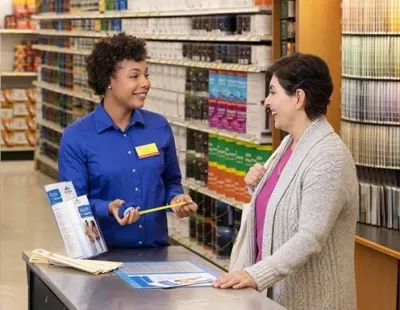
Homeowners and DIYers who paint occasionally lack the experience of a professional painter when estimating how much paint is needed for the job at hand.
Below are the types of questions you should consider and discuss with a paint store expert in order to get the best advice. These questions will help determine how much paint you need for your next project. Paint calculator - https://www.doityourself.com/stry/how-much-paint-do-you-need
1. What is the square footage?
- First, determine the area of the surface you want to paint, whether interior walls or the outside of a house. To calculate the area of the space yourself, measure the width and height of each wall. For each wall, multiply the width times the height to get the square footage. Add the square footage of each surface together to get the total.
- Next, measure any windows, doors, or other breaks in the wall and subtract their square footage from your original calculation. Now you have the project area—the number of square feet you need to cover.
- Next you will need the coverage rate of your paint, which you may be able to find on the container’s label. Most coverage rates are between 300–400 square feet per gallon. If you don’t know the coverage rate, use 350 to get a rough estimate.
- To determine how much paint you will need, divide the total project area by the coverage rate. For example, the square footage of a 10’x10’ room with a ceiling height of 10 feet is about 400 square feet. If the coverage rate is 400 square feet per gallon, you need one gallon. If the coverage rate is 300 square feet per gallon, you’d need 1.33 gallons. After subtracting windows and doors, you’d probably only need one gallon for a typical 10’x10’ room. By the same method, a 20’x20’ room (with 10 feet ceilings), would probably require two gallons.
- Many paint manufacturers and retailers provide automated paint calculators to help painters estimate the amount of paint they’ll need. View a list of online paint calculators.
2. Are you making a big color change?
The difference in color may have an impact on how much paint you will need. If the new paint color is similar to the old paint color, you will need fewer coats. However, if you change from a very dark color to a very light color, or from a very light to a very dark one, you may need three or even four coats. Some vibrant and dark colors—especially red, orange and purple—may take even more coats to get an even finish.
3. Is the surface textured?
Textured walls require more paint than smooth walls because they have more surface area. The greater the texture, the more paint is needed. You may need up to 50 percent more paint for rough textures.
4. Shiny or flat sheen?
As sheen decreases, coverage increases. Flat paints require less paint to cover, while semi-gloss and glossy paints require more paint. Generally, a job that takes two coats of flat paint typically takes three or more coats of semi-gloss or glossy paint.
5. Have you used primer?
New, unprimed drywall, plaster, and bare wood absorb more paint and require more coats than surfaces that have already been primed or painted with a base coat. Primers are usually less expensive than paint, and they are specially formulated to improve adhesion and fill porous surfaces.
Primer prevents the top coat from being absorbed and reduces the number of coats needed. Instead of primer, you can also use up paint leftover from a previous project by applying it as a base coat to even out the surface and color.
6. Do you need tinted primer?
Although primer is usually white, you can often ask your paint retailer to tint primer so that the color of the primer is closer to the final color. This will reduce the number of coats you’ll need. Consider using tinted primer for certain color changes. Some paint retailers will tint primer for you, but you should know that there are limitations to how much pigment can be added to primer. The color will not be the same as the final coat, but tinting primer will reduce the number of top coats you’ll need.
Tip: use gray primer when changing the wall color to red.
Left Over Paint?
Before recycling your leftover paint, maybe you have an old piece of furniture that can use a makeover to give it new life, you can try donating it to: a school programs such as shop or art classes, offer it to friends and neighbors, local art and craft programs, or re-use stores like Habitat for Humanity Re-Stores.
How to store paint:
When opening a paint can, use a paint key instead of a typical screwdriver or other tool. Screwdrivers will bend, distort, or otherwise damage the lid, making it difficult to put back on. You can pick up a paint key, or paint can opener, wherever you purchase paint.
When putting the lid back on the can, tap it with a rubber mallet instead of pounding it with a hammer.
If you don’t have a mallet, place a piece of wood or a book between the hammer and the lid and then carefully tap it down.
Keep the Rim Clean
If you wipe the edge of your brush on the rim of a paint can, you will end up with a rim full of accumulated paint. If you use up all the paint, that’s not a problem. But if you want to reseal the can and save it for later, you will have trouble getting the lid on tight. Follow these tips to keep the rim clean and clear:
- Tape the rim of a paint can into the shape of a “V” or an arrow, to provide a cleaner pour that leaves the rim clearer during clean-up.
- Wipe out the rim regularly while you are working and just before putting on the lid.
- If paint has dried in the rim, you can try to pry it out before replacing the lid. Be careful not to drop any dried paint into the can.
While You are Working
When you are using a brush, pour paint from the original can into a paint tray. This will also allow you to close the original can while you are working and keep air from drying out the paint.
Cover the opening with a piece of plastic wrap before putting on the lid. The plastic will act as a gasket, creating a tighter seal.
STORAGE LOCATION
Keep from Freezing
Water-based paint labels normally read “keep from freezing,” but did you know that paint may still be usable even after it freezes once or twice? If you can stir paint into a smooth consistency, it’s still good. If it freezes and thaws several times, its condition will worsen each time. If you stir paint and it stays lumpy and doesn’t get smooth, it’s spoiled.
Keep Out of the Rain or Damp Locations
When cans get wet, they rust and the labels fall off. Even plastic cans have metal lids that can rust. Rusty cans and lids make a mess and fall apart when handled. The rust may fall into the paint, making it unusable. If the label falls off, you won’t know what type of paint or color is in the can. Keep your paint dry.
To indicate the level and color of paint in a particular can, use a brush to paint a line on the exterior of the paint can. Use the same color as the paint that is inside the can. Use a permanent marker to write a note on the side that will tell you when you bought the paint and where you got it. Include a brief description of the room or wall that the paint has been used on, as well. *Note: when it comes to recycling, PaintCare sites only accept leftover paint in original containers with the original manufacturers printed label.
How and where to recycling paint a location near you: https://www.paintcare.org/drop-off-sites/
What can be recycled:
Accepted
The following are PaintCare products included in the program. When purchased, the PaintCare fee is applied. These products are accepted at no additional cost when dropped off at PaintCare’s participating drop-off sites.
• Interior and exterior architectural paints: latex, acrylic, water-based, alkyd, oil-based, enamel (including textured coatings)
• Deck coatings, floor paints (including elastomeric)
• Primers, sealers, undercoaters
• Stains
• Shellacs, lacquers, varnishes, urethanes (single component)
• Waterproofing concrete/masonry/wood sealers and repellents (not tar or bitumen-based)
• Metal coatings, rust preventatives
• Field and lawn paints
Not Accepted
The following are non-PaintCare products and are not included in the program. When purchased, the PaintCare fee is not applied. They are not accepted at PaintCare’s participating drop-off sites.
• Paint thinners, mineral spirits, solvents
• Aerosol coatings
• Auto and marine paints
• Art and craft paints
• Caulking compounds, epoxies, glues, adhesives
• Paint additives, colorants, tints, resins
• Wood preservatives (containing pesticides)
• Roof patch and repair
• Asphalt, tar and bitumen-based products
• 2-component coatings
• Deck cleaners
• Traffic and road marking paints
• Industrial Maintenance (IM) coatings
• Original Equipment Manufacturer (OEM) (shop application) paints and finishes
Containers that are leaking, empty, or without the original printed manufacturer’s label are not accepted at drop-off sites.
